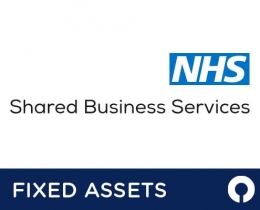How Tariffs Are Transforming Capital Expenditure Strategy
Understand the global impact of tariffs on fixed assets, capital planning, and long-term financial strategies.

Understand the global impact of tariffs on fixed assets, capital planning, and long-term financial strategies.


So, how can we hope to plan effectively, mitigate risks, and align capital expenditure strategies with such a rapidly evolving global landscape? While no one has a crystal ball for global trade, this article provides a practical framework to help finance professionals plan, adapt, and invest with confidence.
Capital expenditure (CapEx) refers to funds businesses use to acquire, upgrade, and maintain physical assets such as property, industrial buildings, or equipment. Unlike operational expenditure (OpEx), which covers day-to-day running costs, CapEx represents long-term investments designed to drive growth and operational efficiency. In almost any industry, capital expenditure plays a critical role in shaping a company’s balance sheet, influencing both its asset base and its future profitability.
With the resurgence of tariffs and protectionist policies, the dynamics of capital expenditure are shifting. Tariffs on imported goods like steel, machinery, and technology components inflate the costs of large-scale investments, making budgeting and forecasting more complex. Finance professionals must now account for these variables when advising on large purchases or long-term strategic plans, ensuring that expenditures are sustainable and aligned with the company’s long-term value creation goals. Whether investing in tangible assets, expanding facilities, or upgrading computer equipment, understanding the evolving CapEx landscape is essential for safeguarding the company’s financial health and positioning it for future growth.
Tariffs on imported goods directly and significantly impact the cost structure of fixed assets. Imposing duties can dramatically increase the initial acquisition cost for organisations investing in property, plant, equipment, and computer equipment. Whether purchasing machinery sourced internationally or importing key structural components, businesses face heightened upfront expenses that alter financial forecasts and project viability.
Fixed assets, which are considered essential for business operations and appear on the company’s balance sheet, now require revised capital allocation strategies. Higher import duties not only inflate an asset’s cost basis but also influence depreciation schedules, impairment testing, and long-term value assessments. For tangible assets such as manufacturing equipment, physical infrastructure, and computer hardware, these added costs can impact decisions about whether to proceed with a project, delay it, or seek alternative suppliers. For finance professionals, understanding these shifts is crucial to protecting business operations, maintaining financial stability, and achieving long-term strategic objectives in a more protectionist global economy.
When tariffs raise the purchase price of imported assets, accounting standards require that these additional costs be capitalised rather than expensed immediately. Under frameworks like IFRS and U.S. GAAP, the total cost of a fixed asset includes not only the purchase price but also all necessary costs to bring the asset to a working condition, including tariffs. As a result, the asset’s cost basis increases, with important downstream effects on financial reporting and planning.
This increase in the asset’s cost base leads to higher annual depreciation expenses in the company’s income statement. For example, a piece of equipment purchased for £1 million that attracts a 20% import duty would be capitalised at £1.2 million. Over a 10-year useful life, this raises the annual straight-line depreciation from £100,000 to £120,000, impacting reported net income and tax liabilities. By accurately capitalising tariff costs, finance professionals ensure compliance, maintain transparency in financial statements, and better reflect the true economic value of company assets.
Tariff-driven increases in asset acquisition costs have a cascading effect on depreciation and impairment assessments. As tariffs inflate an asset’s cost basis, the corresponding depreciation charges grow proportionally over the asset’s useful life. Higher annual depreciation expenses reduce reported net income, affecting key financial metrics used by stakeholders to evaluate a company’s performance and financial health.
In addition to elevating depreciation expenses, tariff-related cost pressures can trigger earlier or more frequent impairment reviews. If an asset’s carrying amount exceeds its recoverable value — potentially due to delayed projects, increased capital expenditures, or supply chain disruptions — an impairment loss must be recognised. This directly impacts the company’s balance sheet and income statement, potentially influencing credit ratings and investment decisions. For finance professionals, proactively monitoring asset values and assessing impairment risks has become an essential discipline in a landscape shaped by unpredictable tariff policies and global market volatility.
Rising tariffs are prompting companies to rethink their sourcing strategies and diversify their supplier bases. Businesses that once relied heavily on low-cost imports from tariff-affected countries are increasingly seeking alternative vendors in regions with lower or no trade barriers. This shift helps to stabilise capital expenditures and protect margins but often involves longer lead times for procurement, added due diligence costs, and reconfigured logistics operations.
Vendor diversification and supply chain realignment have become critical components of business strategy and investment planning. Finance professionals must now weigh not only the direct cost of assets but also broader considerations such as political risk, currency volatility, and potential future tariff exposures. Capital expenditures are increasingly being evaluated based on total landed costs, long-term stability of supply chains, and strategic alignment with future growth markets. This more holistic approach ensures that businesses are better insulated against global trade uncertainties while maintaining their operational and financial agility.
In a tariff-inflated environment, businesses are reassessing the balance between maintenance capital expenditure (CapEx) and operational expenses. Higher costs for acquiring new assets mean that repairing and extending the life of existing assets often becomes a more attractive option. However, distinguishing between a maintenance CapEx, which enhances the future economic benefits of an asset and is capitalised, and a routine maintenance expense, which is immediately expensed, is more important than ever for accurate financial reporting.
Finance teams must carefully document the nature and purpose of maintenance activities to ensure proper classification and compliance. Investments that extend the useful life, improve efficiency, or increase the value of an asset should be capitalised. At the same time, activities that restore functionality without significant enhancement are classified as ongoing expenses. This distinction lets businesses control operational expenditure while optimising long-term capital asset strategies in an increasingly challenging investment climate.
While tariffs increase the cost of acquiring fixed assets, they also create opportunities for businesses to leverage tax incentives and duty relief programmes. Some jurisdictions offer accelerated capital allowances or enhanced tax deductions for assets burdened by high tariffs, allowing companies to offset part of the financial impact through reduced taxable income. Additionally, duty drawback schemes or duty credits may be available when imported goods are re-exported or incorporated into products shipped abroad.
Finance professionals must work closely with tax teams and procurement departments to identify and capitalise on these opportunities. Proper documentation and asset tracking are essential to claiming eligible reliefs efficiently. By proactively incorporating tax planning into capital expenditure strategies, organisations can partially mitigate the increased costs associated with tariffs, strengthen cash flow statements, and optimise overall investment outcomes in a highly volatile trade environment.
Many organisations are re-evaluating their entire asset lifecycle strategies in response to rising acquisition costs driven by tariffs. Extending the useful life of existing assets through refurbishment, upgrades, and enhanced maintenance is becoming a viable alternative to large capital investments. In some cases, leasing assets instead of outright purchasing them allows companies to transfer some of the tariff risk to lessors while preserving financial flexibility.
Finance professionals increasingly rely on total cost of ownership (TCO) models that factor in tariff costs, maintenance capex, supply chain disruptions, and disposal expenses. Strategic asset management decisions must now consider the initial purchase price, long-term value generation, and risk exposure. By adopting a more holistic view of asset lifecycle planning, companies can align capital investments with future growth goals, protect financial health, and build resilience against the uncertainties of global trade dynamics.
Tariffs are fundamentally reshaping the landscape of capital expenditure, asset management, and long-term strategic planning. Rising acquisition costs, increased depreciation expenses, supply chain realignments, and the need for enhanced tax planning are just some of the new challenges finance professionals must navigate. Companies anticipating these changes, adapting their asset strategies, and incorporating tariff impacts into their financial models will be better positioned for resilience and future growth.
For finance professionals, the ability to lead through this complexity — ensuring accurate financial reporting, optimising capital allocation, and maintaining strategic agility — has never been more important. By refining investment planning processes today, businesses can safeguard their financial health and secure a competitive advantage in a shifting global economy.
For tailored advice or to explore how FMIS solutions can support your capital asset management and financial planning needs, contact us for a demo, email sales@fmis.co.uk, or call us at +44 (0) 1227 773003




FMIS Ltd
167b John Wilson Business Park
Whitstable
Kent
CT5 3RA
United Kingdom
Phone:+44 (0) 1227 773003
Fax:+44 (0) 1227 773005
Sales:sales@fmis.co.uk
Support:support@fmis.co.uk
 FRS 102 Fixed Asset Accounting: A Practical Guide for UK Businesses
FRS 102 Fixed Asset Accounting: A Practical Guide for UK Businesses| Cookie | Duration | Description |
|---|---|---|
| cookielawinfo-checkbox-advertisement | 1 year | Set by the GDPR Cookie Consent plugin, this cookie is used to record the user consent for the cookies in the "Advertisement" category . |
| cookielawinfo-checkbox-analytics | 11 months | This cookie is set by GDPR Cookie Consent plugin. The cookie is used to store the user consent for the cookies in the category "Analytics". |
| cookielawinfo-checkbox-functional | 11 months | The cookie is set by GDPR cookie consent to record the user consent for the cookies in the category "Functional". |
| cookielawinfo-checkbox-necessary | 11 months | This cookie is set by GDPR Cookie Consent plugin. The cookies is used to store the user consent for the cookies in the category "Necessary". |
| cookielawinfo-checkbox-others | 11 months | This cookie is set by GDPR Cookie Consent plugin. The cookie is used to store the user consent for the cookies in the category "Other. |
| cookielawinfo-checkbox-performance | 11 months | This cookie is set by GDPR Cookie Consent plugin. The cookie is used to store the user consent for the cookies in the category "Performance". |
| CookieLawInfoConsent | 1 year | Records the default button state of the corresponding category & the status of CCPA. It works only in coordination with the primary cookie. |
| PHPSESSID | session | This cookie is native to PHP applications. The cookie is used to store and identify a users' unique session ID for the purpose of managing user session on the website. The cookie is a session cookies and is deleted when all the browser windows are closed. |
| viewed_cookie_policy | 11 months | The cookie is set by the GDPR Cookie Consent plugin and is used to store whether or not user has consented to the use of cookies. It does not store any personal data. |
| Cookie | Duration | Description |
|---|---|---|
| CONSENT | 2 years | YouTube sets this cookie via embedded youtube-videos and registers anonymous statistical data. |
| _ga | 2 years | The _ga cookie, installed by Google Analytics, calculates visitor, session and campaign data and also keeps track of site usage for the site's analytics report. The cookie stores information anonymously and assigns a randomly generated number to recognize unique visitors. |
| _gat_UA-48954022-1 | 1 minute | A variation of the _gat cookie set by Google Analytics and Google Tag Manager to allow website owners to track visitor behaviour and measure site performance. The pattern element in the name contains the unique identity number of the account or website it relates to. |
| _gid | 1 day | Installed by Google Analytics, _gid cookie stores information on how visitors use a website, while also creating an analytics report of the website's performance. Some of the data that are collected include the number of visitors, their source, and the pages they visit anonymously. |
| Cookie | Duration | Description |
|---|---|---|
| VISITOR_INFO1_LIVE | 5 months 27 days | A cookie set by YouTube to measure bandwidth that determines whether the user gets the new or old player interface. |
| YSC | session | YSC cookie is set by Youtube and is used to track the views of embedded videos on Youtube pages. |
| yt-remote-connected-devices | never | YouTube sets this cookie to store the video preferences of the user using embedded YouTube video. |
| yt-remote-device-id | never | YouTube sets this cookie to store the video preferences of the user using embedded YouTube video. |
